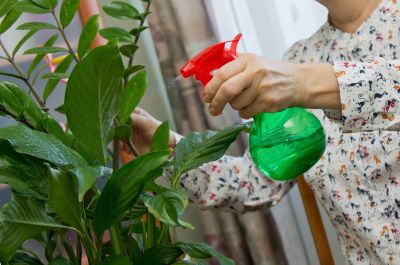About Thrips on Houseplants
Thrips on indoor plants are not as common as thrips on outdoor plants, but they do occur and it is important to take care of them before the damage becomes too difficult to deal with. Like any pest, it is best to identify them early in order to have the best chance in getting rid of them. There are many species of thrips and some feed on leaves, flowers, buds, and even fruit. Damage on leaves may look like white or silver colored streaks. Sometimes the growing points will be contorted. Leaves that have a heavy thrip infestation will appear silvery and brown. Occasionally you will see dark fecal spots on the leaves as well. Thrips will lay eggs on the plant itself. These then hatch and the young thrips, called nymphs, will drop into the soil. Once they are in the soil, they will pupate and adult thrips will come out of the soil. The cycle will then repeat.
Indoor Thrips Control
Since houseplant thrips are found on the plant itself as well as in the soil during various periods of their lifecycle, you must treat both the plant and the soil. Early detection is key, so be sure to take action as soon as you’ve identified that you have thrips. There are a couple methods to treat the leaves, stems, and flowers on your houseplant. The first is to use a spray of water to wash off any thrips on your plant. Keep a close eye on the plants and repeat this regularly. If this doesn’t work, or if you want to try a spray, both insecticidal soaps or neem oil sprays are safe and effective methods. Be sure to follow the manufacturer’s recommendations for application. To ensure sure that you eradicate all thrips, you may want to treat the soil since the nymphs, or young thrips, may be present in your soil. A systemic houseplant insecticide can be added to the soil and it will take care of many pests. You simply water in the systemic insecticide and the plant will absorb it throughout its system and protect itself against a variety of pests, including thrips.
